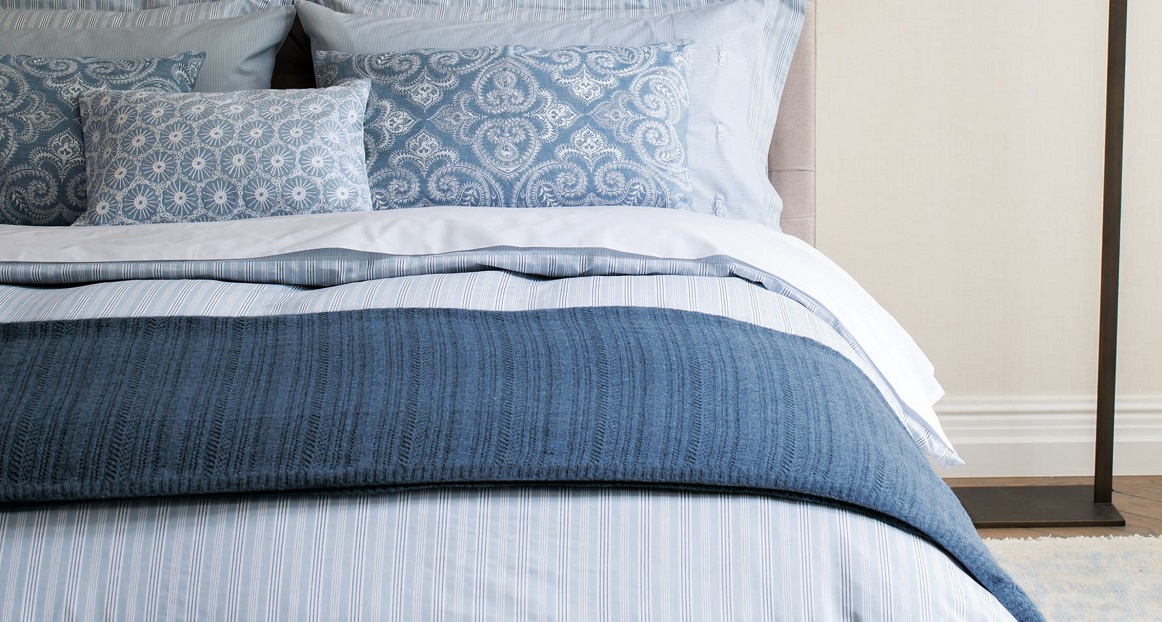When shopping and buying bedding, sheets, or linens it’s always a good idea to know the types of fabric and weaves used, which will help you find the perfect match for your bed and comfort.
List of the different types of fabrics used in bed sheets and linens that will help find the silky, soft, or crisp sheets you prefer.
Blends Blends are often found in high-end and inexpensive bed sheets and linens to create durability. Blends can be a combination of types of cottons, silk, or other fibers. Most blends found in bedding fabrics are made of cotton and viscose fiber from bamboo, silk or polyester.
Cotton: Cotton is the most used and favored fabric for bed sheets and linens since it’s the most durable, breathable, and softest. There are many different types of cotton used for bed sheets along with many blends. Here are some of the most common types of cotton used in bedding and sheets.
Egyptian cotton : is the most luxurious and often used in high-quality and expensive bed sheets.
Pima cotton : cotton is also known for its softness and natural sheen. It has medium to extra-long staple fibers ideal for bed sheets.
Upland cotton : is an array of cotton with medium-length staples produced in the United States.
Supima® : is a trademarked name for fibers and materials woven from 100% American Pima cotton.
MicroCotton®: is a trademarked brand for a cotton yarn developed in India. Its durable cotton and is considered amongst the finest in the
Tencel®: Tencel is a man-made, new-age fiber used in bedding and linens. It has an outstanding ability to resist moisture and hinder bacteria growth.
Silk : Silk is luxurious, soft fiber produced from silk worms. Silk sheets and bedding create a silky, cool alternative for warm summer days. Silk is also naturally hyper-allergenic, which is another alternative for people who suffer from allergies.
Polyester : Polyester is a man-made and natural fiber produced from polymers which contain the ester functional group in their main chain. Polyester sheets are often found in motels and hotels, where durability and cleanliness is preferred.
Cotton Blankets: are ideally suited to Summer, Spring, Autumn or air conditioning. They can also be used for additional warmth in cold weather when used in conjunction with a fleece blanket. Cotton blankets are suited for when a sheet alone doesn't offer enough warmth.
Fleece Blankets : are primarily used on cold Winter nights; these blankets come in varying grams per square metre (gsm). The higher the GSM, the warmer (and also heavier) the blanket.
Wool Blankets : are also primarily used during the cooler months; a more traditional blanket that offers good thermal regulation. Being a natural fibre they breathe well.
GSM:Blankets are measured in GSM. GSM stands for grams per square metre and refers to the amount of fibre that has been used in the product, the more fibre that is used, the higher the GSM. The higher the GSM, the thicker and warmer it is.
Once you have chosen your comfort level you now choose the quality of the materials for added comfort and product longevity. There are 2 main factors to consider loft & thread count.
Loft : The higher the loft in the down typically means a higher percentage of whole down clusters, which make the down more resilient, longer lasting and provides more comfortable warmth.
Thread count : Higher thread count fabric is typically finer and lighter weight, giving more comfort and airiness to the sleeper. It also provides a tighter weave which gives added protection against down working its way through the fabric

